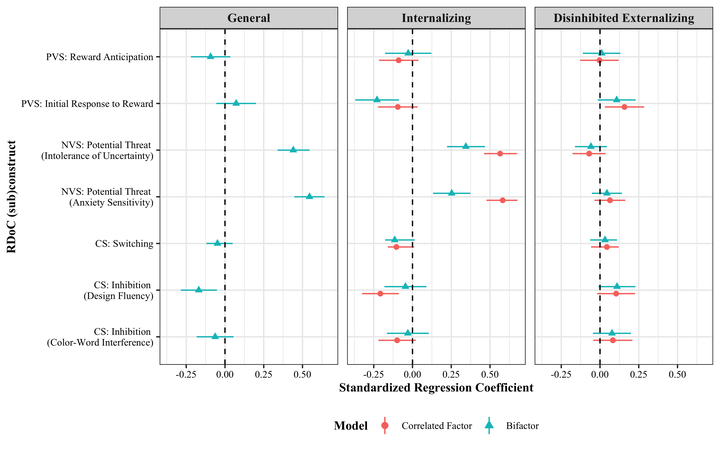Evaluating the criterion validity of hierarchical psychopathology dimensions across models: Familial aggregation and associations with Research Domain Criteria (sub)constructs

Abstract
The Hierarchical Taxonomy of Psychopathology (HiTOP) posits that psychopathology is a hierarchy of correlated dimensions. Numerous studies have examined the validity of these dimensions using bifactor models, in which each disorder loads onto both a general and specific factor (e.g., internalizing, externalizing). Although bifactor models tend to fit better than alternative models, concerns have been raised about bifactor model selection, factor reliability, and interpretability. Therefore, we compared the reliability and validity of several higher-order HiTOP dimensions between bifactor and correlated factor models using familial aggregation and associations with Research Domain Criteria (RDoC) (sub)constructs as validators. Lifetime psychopathology was assessed in a community sample (N=504) using dimensional disorder severity scales calculated from semi-structured interview data. A series of unidimensional, correlated factor, and bifactor models were fit to model several HiTOP dimensions. A bifactor model with two specific factors (internalizing and disinhibited externalizing) and a correlated two-factor model provided the best fit to the data. HiTOP dimensions had adequate reliability in the correlated factor model, but suboptimal reliability in the bifactor model. The disinhibited externalizing dimension was highly correlated across the two models and was familial, yet largely unrelated to RDoC (sub)constructs in both models. The internalizing dimension in the correlated factor model and the general factor in the bifactor model were highly correlated and had similar validity patterns, suggesting the general factor was largely redundant with the internalizing dimension in the correlated factor model. These findings support concerns about the interpretability of psychopathology dimensions in bifactor models.